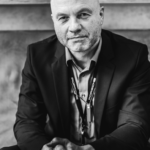Published on: May 18, 2025 / update from: May 18, 2025 - Author: Konrad Wolfenstein

Gira Solarpark: 70,000 square meters for the energy transition in Radevormwald - creative image: Xpert.digital
Gira builds one of the largest solar parks in NRW: pioneer in sustainability
With solar power against CO₂: Gira reduces emissions by half
The traditional company Gira Giersiepen GmbH & Co. KG has built one of the largest photovoltaic power plants in North Rhine-Westphalia in Radevormwald. A solar park is being built on an impressive area of 70,000 square meters, which is due to generate around 10 million kilowatt hours of climate -neutral electricity every year from summer 2025. The project not only reduces the company's CO₂ emissions by more than 50 percent, but also makes building technology specialists more independently of volatile energy markets. With electricity costs of only 5-6 cents per kilowatt hour, the multi-million dollar investment is expected to pay off within 6-10 years and represents a pioneering model for industrial self-supply with renewable energies.
Suitable for:
- NRW solar obligation: From 2024 there will be an expanded solar roof obligation in North Rhine-Westphalia according to the solar carport / solar parking requirement
Project overview and targets of the Gira Solar Park
The Gira Solarpark is being built on a 70,000 square meter area on federal road 229 towards Halver, not far from the two company locations in the Mermmbach industrial area in Radevormwald. The project was officially launched on October 28, 2024 by Gira Managing Director Sebastian Marz in the presence of the mayor of Radevormwald, Johannes Mans, and numerous representatives of the companies involved. The construction of the facility followed a lengthy approval process in which more than 20 offices, institutions and authorities were included.
The decision for its own solar park is strategically significant for Gira: “Increasing to renewable energies and its own solar power plant is a strategic decision for Gira in several ways: We make a piece of our declared a bit independent of the energy markets. To contribute, ”emphasized Managing Director Marz at the official start of the project. The solar park is understood as a “clear commitment to the Radevormwald location”.
The project was created from the company's considerations to open up alternative energy sources. Gira originally planned a combination of solar and wind power in 2021, but had to refrain from doing so due to the then applicable distance area for wind turbines. After examining various options, the decision for a solar park was made on a free -standing company area, with direct connection to the works a central prerequisite for the economy of the project.
Technical details and dimensions
The technical specifications of the Gira Solar Park are impressive: a total of 13,794 state-of-the-art photovoltaic modules are installed, each with an output of 650 watts. These powerful modules were selected in a targeted manner - originally, with over 20,000 less efficient modules, they had been planned with 450 watts each. The more efficient modules increase the annual energy yield by 15 percent.
The photovoltaic modules together cover an area of 37,200 square meters, which corresponds approximately 143 tennis courts. In order to avoid soil seal, the modules are mounted on so-called “PV tables”, which rest on a total of 6,940 posts rammed into the ground, which together result in a length of 21 kilometers. The entire substructure comprises an additional 2,570 side straps with a total length of 16.5 kilometers and 7,250 module carriers with a total length of 29 kilometers. A total of 67 kilometers of fire -dipped steel profiles are used.
Around 180 kilometers of power cables and 60 kilometers of fiber optic lines are laid for networking and electricity transport. These combine the solar park with the two corporate locations in the Dahlia and Röntgenstrasse. The crossing of a watercourse and the federal road 483, which have now been mastered, were particularly challenges.
Timetable and current project status
The planning phase for the Gira Solarpark began in 2021 with considerations of alternative energy sources and lasted about two years. An important milestone was the unanimous resolution of the city council of Radevormwald to change the development plan, which cleared the way for the construction of the solar park.
The solar park is built in several stages. After the official start of the project on October 28, 2024, the substructures for the photovoltaic modules were initially built. The installation of the modules step forward quickly: By the beginning of March 2025, over 95 percent of the 13,772 photovoltaic modules had already been installed. "The last row with modules will be set up as soon as the three transformers are delivered and connected in May in May," explained Dietmar Daszkiewicz, who is responsible for the project as head of facility management.
In parallel to the installation of the modules, the cable connections to the company locations are made. In March 2025, 50 meters were still missing until the connection of the Gira production, development and logistics center in Röntgenstraße and another 300 meters of cable until the connection of the Dahlienstraße campus with plastic production and a large part of the company management.
The commissioning of the solar park is planned for early summer 2025. At the official project presentation, Managing Director Marz and EnergieManager Paasch expressed confidently: “If everything goes according to plan, we will see each other again here in early summer 2025 and then put the Gira Solar Park together.”
Economic and ecological benefits
The Gira Solar Park promises both economic and ecological advantages for the company. The investment costs for PV modules, transformers, the network connection and the new lines are in the medium single-digit million range. This contrasts with considerable savings on electricity costs: the generation costs for one kilowatt hour of solar power will be between five and six cents - less than a third of the current purchase price.
Depending on the success of the planned memory concept, Gira expects an amortization period of six to ten years. Dietmar Daszkiewicz emphasizes: "There is no question for us that the investment in the solar park will be financially worthwhile. It is only a question of 'when'." The company plans to use around 70 percent of the electricity from the solar park for its own purposes in the future and to feed the rest into the public network.
From an ecological point of view, the solar park enables a significant reduction in the company's CO₂ emissions. Gira assumes that the direct electricity -related greenhouse gas emissions will permanently decrease by more than 50 percent due to the green electricity from the solar park. "As part of the Gira climate strategy, we will be able to permanently reduce our electricity-related CO₂ emissions by over 50 %," says the company website.
The reduction should be even greater in terms of perspective, since Gira plans to gradually replace technologies operated with natural gas with electrically operated alternatives: "In the future, the heating of our buildings will take over large heat pumps instead of our combined heat and power plants in the future, for refrigeration production we will use compressors instead of absorption facilities," explains Giancarlo Paasch, who as an energy manager at Gira Connected to the construction of the solar park.
Suitable for:
Local effects and contribution to the energy transition
The Gira Solarpark not only affects the company itself, but also on the city of Radevormwald and its inhabitants. The solar park is created in a commercial area, and to avoid glare effects for drivers and residents, the area is fenced in opaque.
Mayor Johannes Mans welcomes the project and certifies Gira a pioneering role: "I welcome Gira to use this area to pursue future -oriented, own goals and that of the Paris climate agreement." At the same time, he emphasized the need to take into account the interests of various groups such as citizens, agriculture and nature conservation.
The residents of Radevormwald will also benefit from the solar park. According to Oliver vom Lehn, who is jointly responsible for installing the system, about 15 percent of the 22,000 inhabitants could be supplied with the excess electricity: "Of course, the industrial company is always preferred, but of course it is the case that we have simultaneity. This means that in summer around noon, the system will produce more electricity when Gira can decrease. And then of course the system also supplies the public network."
An interesting detail is the planned use of sheep to maintain the green areas among the PV modules. The substructure of the modules prevents the soil completely sealed, so that the surface underneath remains usable for flora and fauna. Gira plans to use about 50 to 70 sheep that are supposed to dig up the grass. The company is still looking for a suitable flock of sheep and has called on interested shepherds to report.
A model for industrial energy transition
The Gira Solarpark in Radevormwald is an impressive example of how medium -sized industrial companies can actively contribute to the energy transition. With an annual generation of almost 10 million kilowatt hours on an area of 70,000 square meters, the complex is one of the largest photovoltaic power plants in North Rhine-Westphalia and demonstrates the potential of renewable energies for industrial self-supply.
The combination of economic and ecological advantages makes the project particularly convincing. Due to the significant reduction in electricity costs and the independence of volatile energy markets, Gira strengthens its competitiveness, while at the same time the CO₂ emissions are significantly reduced. Dietmar Daszkiewicz sums it up: "Economic and sustainability are not two pairs of shoes."
Gira is planning further steps for the future: The changeover of natural gas-powered technologies is intended to further increase CO₂ reduction, and a sophisticated memory concept with battery storage and buffer storage is intended to optimize the use of the solar power. The company shows that it not only relies on renewable energies in the short term, but also pursues a long -term strategy for decarbonization.
The Gira Solarpark could serve as a model for other medium -sized companies that are looking for ways to make their energy supply more sustainable and independent. It shows that the energy transition is not only a challenge, but also an economic opportunity that can be successfully used with forward -looking planning and willingness to invest.
Suitable for:
Novel photovoltaic solution for reducing costs and saving time
More about it here:
Your partner for business development in the field of photovoltaics and construction
From industrial roof PV to solar parks to larger solar parking spaces
☑️ Our business language is English or German
☑️ NEW: Correspondence in your national language!
I would be happy to serve you and my team as a personal advisor.
You can contact me by filling out the contact form or simply call me on +49 89 89 674 804 (Munich) . My email address is: wolfenstein ∂ xpert.digital
I'm looking forward to our joint project.














